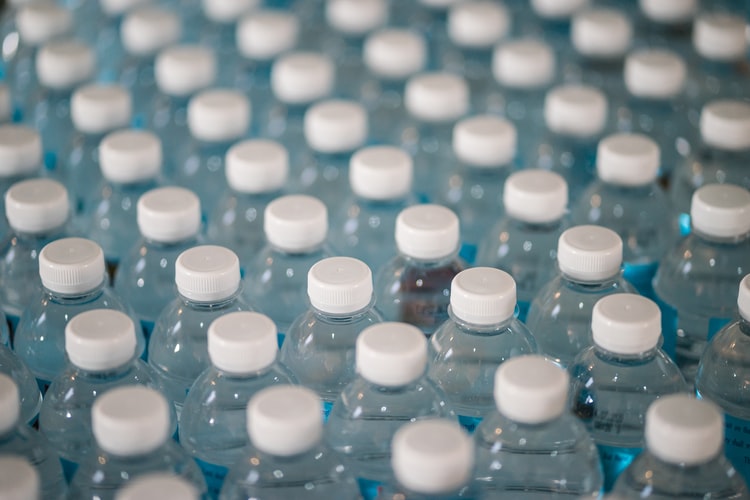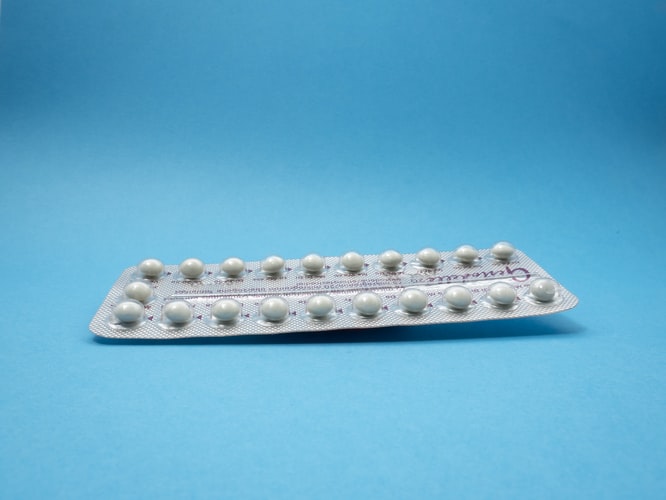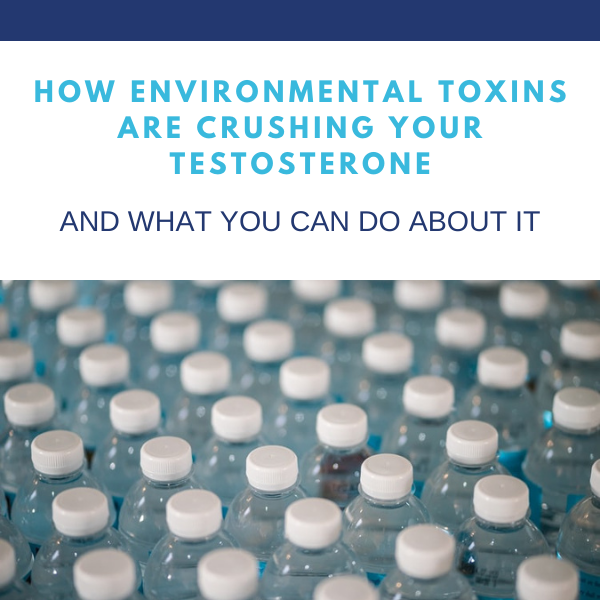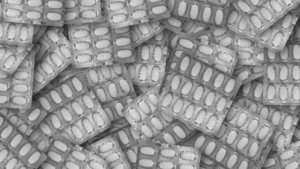
Let me tell you about a patient of mine—Joe—a 49-year-old executive who came to me for low testosterone.
He wanted testosterone replacement therapy because he was suffering.
He’d been happily married for 10 years. But over that time, he noticed declining energy, trouble focusing at work, and fatigue. His personality and mood had changed, and he had diminished sex drive so wasn’t interested in being intimate with his partner.
And when they were intimate, things didn’t work as they should…
Joe just wasn’t the man that he used to be.
Eventually, his marriage failed and he struggled at work. Joe’s lack of energy and inability to focus meant that he made mistakes. He performed poorly and he actually lost his job.
After I checked some basic labs, I found his testosterone levels were markedly lower than they should be, which explained a lot of his issues.
This is very common in men like Joe, and even guys in their 20s, 30s, and 40s. They present with the same symptoms: lack of energy, low libido, fatigue, weight gain, and inability to focus.
It’s important to point out that the problem with low T isn’t just related to normal sex drive and performance or building muscle. Healthy testosterone levels are necessary for cognitive function and mental focus. Testosterone is needed for optimal cardiovascular health, bone density, and even longevity. It is essential for quality of life.
The consequences of low testosterone are massive.
And it turns out that it’s not just Joe who’s experiencing it. Testosterone is decreasing at a population level. This article will explain why we’re losing our testosterone and what we—as individual guys—can do about it.
The Problem: Population-Level Changes in Hormones and Fertility
I’m not kidding when I say that men are under attack. We are experiencing a testosterone and fertility pandemic. As I declare in my book Male 2.0, at the current rate, in twenty years the entire male population will be sterile and impotent.
A Testosterone Pandemic
We started to clearly see the problem in the 1990s.
One of the watershed studies on the subject was the Massachusetts Male Aging Study. The study looked at the hormone levels of several large cohorts of men and looked at how they changed over time.
The study found that men had decreasing levels of testosterone as they age. That wasn’t a surprise—we already knew that testosterone tends to decrease as we get older.
But the real finding was that testosterone levels were decreasing in age-matched cohorts, too. In other words, a 55-year-old man in 2004 had 17 percent less testosterone than a 55-year-old man in 1987. And free testosterone, which is much more significant and impactful, dropped by over 45%!
So it’s not just age: we’re seeing testosterone in age-matched men declining.
These results have been consistent across research studies, and not just in the US.
Decreased Testosterone Isn’t Only Due to Lifestyle Changes
Now, we know that lifestyle factors affect the endocrine system and testosterone levels. Poor diets, low exercise, obesity, smoking—these are all known to reduce testosterone.
And people are increasingly obese. As a population, we’re not exercising nearly as much as we should. Could that be the reason for the decreases in Testosterone?
Those factors almost certainly have an effect, but the studies mentioned above actually accounted for these differences, and can’t explain the entire effect. So something else must be going on.
Declining Fertility
It’s not just testosterone, either. Research has consistently found that sperm counts and fertility in men are steadily declining, at least in the Western world.
In her book, Count Down: How Our Modern World Is Threatening Sperm Counts, Epidemiologist Dr. Shanna Swan meticulously details the research and evidence for declining fertility. Her team finds that in the past 40 years, sperm levels in Western countries have plummeted by 50%. She’s also documented changes in the sexual development of men and women.
And the culprit? Endocrine Disruptors.
The Root Cause: Endocrine Disruptors
First, what are endocrine disruptors? They are toxins, toxicants, and chemicals in our environment that interfere with hormone activity.
They’re everywhere. Used in food production, in food containers, plastics, in agriculture, in our personal care products, and even in our drinking water! Endocrine disruptors are literally everywhere, and it’s getting worse. Here are a few of the main ones that we know about and how they affect testosterone.
Atrazine
Atrazine is a weed killer that’s used on our food crops like wheat and corn. It’s one of the most widely used herbicides in the US.
And it’s also one of the commonly detected pesticides in US drinking water.
In one well-cited study, researchers at the University of California, Berkeley found that exposure to Atrazine—even at very low levels—causes masculinization and even feminization of male fish, amphibians, and reptiles. In one case, it caused the complete feminization of adult male frogs.
Meaning male frogs became female frogs that actually laid eggs and reproduced! This is powerful evidence that Atrazine is a powerful endocrine disruptor and could easily contribute to hormonal abnormalities in men.
BPA (Bisphenol A)
BPA is a synthetic compound commonly used to create plastics. It’s found in a variety of consumer goods including plastic water bottles, food packaging containers, baby bottles, sports equipment, and even CDs.
BPA turns out to be a xenoestrogen, mimicking estrogen in the body. It’s a carcinogen, having been linked to breast cancer and it appears to lead to changes in brain development among other health risks.
BPA has also been shown to dramatically lower testosterone production.
While the FDA maintains that it’s safe at low levels, the problem is that we don’t really know what effect it has on our bodies or hormones. And it’s everywhere. While efforts to remove it from many products have been successful, the result may not have been better chemicals—just different ones.
Birth Control

Isn’t birth control just for women?
Well, yes, it is intended for women. But it turns out that the molecule in birth control pills—estradiol—doesn’t break down very easily. It’s excreted out of women’s bodies via urine, where it enters our water supply.
And while our water treatment systems are very good at getting rid of the bacteria and other harmful things in the drinking water, they aren’t good at removing this particular endocrine disruptor. It’s detectable in the water supply in many cities.
What effect does it have? It’s clear that it’s disrupting our hormone levels. And we know that it can have impacts on fertility that don’t just affect one generation. In one animal study, it affected fertility for up to three generations.
(As an aside, never throw old prescription medications—birth control or otherwise—down the drain or in the toilet. Throw them in the trash).
Phthalates
Phthalates are chemicals that are used to make plastics soft and flexible. They are present in everything from perfumes and colognes to soaps, shampoos, and deodorants, vinyl flooring, and raincoats, to your garden hose to lipstick.
The problem with phthalates is that they get into the water we drink. And when they’re in skin creams or plastics, we can absorb them through our skin.
And they have a dramatic effect on testosterone. Several research studies have found evidence that phthalate exposure can reduce testosterone and interfere with testicular function.
Not good.
What You Can Do
These are just a few of the chemicals and toxicants that we’re exposed to on a daily basis. We are literally bathing in a soup of endocrine disruption!
And it’s contributing to the testosterone pandemic we’re experiencing. I’m not exaggerating when I say that this is a public health crisis.
So what can we do?
It’s easy to say, “Well, plastic is everywhere, so there’s nothing I can do.”
But actually, there is quite a bit you can do to minimize your exposure. There are choices you can make. And when you make the choice to minimize your risk, you’re also making the choice to give yourself a much better shot at healthy testosterone levels.
Here are the steps everyone can take to mitigate their exposure to these environmental toxins.
Be Careful What You Eat

Because endocrine disruptors are often used in pesticides, herbicides, and fungicides, they are used heavily in agriculture and can make their way into your food. To avoid them, try to:
- Eat grass-fed meats
- Eat organic foods when possible
- Avoid milk, if possible. If you must have milk, choose only organic. Try almond milk instead!
- Avoid soy, which is highly processed here in the US, and loaded with phytoestrogens
- Eliminate highly processed foods
- Cook at home when possible so you know exactly what’s being used
Eating a clean diet doesn’t have to be complicated. Choose real foods: fruits, vegetables, and clean meats. Avoid eating highly processed foods or food with ingredients that you can’t pronounce.
Be Careful What You Drink
Water is essential for health. But even though the US has relatively good water systems endocrine disruptors can make it into your tap water and they’re also often found in bottled water.
I recommend:
- Avoiding plastic water bottles
- Opting for glass or stainless steel drinking containers
- Getting a charcoal water filter (charcoal helps remove these chemicals)
When it comes to coffee:
- Avoiding plastic coffee cups
- Avoiding single-use coffees like K cups and Nespresso pods
Be Careful with Food Packaging

There’s often a ton of plastic in food packaging.
- Avoid buying foods wrapped or packaged in plastic
- Avoid using plastic wrap or plastic Tupperware to store food
- Never heat up your food in a plastic food container. Heat dramatically increases the release of chemicals from plastics into your food
- Store food in glass or metal containers
Be Careful What You Put on Your Body
Unfortunately, endocrine-disrupting chemicals are in lots of the cosmetics and personal care items that we use. It’s hard to avoid them if you don’t know what to look for. But there are some ways to make better choices.
I recommend three apps that I use to find products that are less hormonally risky:
To use them, just scan the barcode of the product you’re considering and it will tell you if there are any serious concerns.
Understand Your Genes
Above are strategies that everyone can use, regardless of your own personal genetic make-up.
But precision medicine allows us to understand how our body responds to toxicity and exposure to these chemicals. We’re able to figure out how well we detox, whether we’re at risk for inflammation, and more.
Understanding exactly how our genes work helps to protect us at an epigenetic level.
So working with a precision medicine expert can help you understand your genetic blueprint and understand exactly what steps you can take to optimize your detoxification and overall health.
Joe Raised His Testosterone Naturally, and so Can You
Fortunately, Joe’s story ended well.
After a thorough analysis of his lifestyle and habits, we created a personalized health plan that helped him increase his testosterone levels and optimize all of his other hormones as well, including thyroid, DHEA, Vitamin D, and melatonin.
Leveraging his genetics helped him know what to eat, what not to eat, what micronutrient support he needed, and how to upregulate his detox pathways so he could get rid of toxins more quickly.
We reduced his exposure to endocrine disruptors, made sure that he was eating well, and got him a good water filter. We helped him choose personal care products that were toxin-free.
And we covered the basics – we focused on optimizing his sleep, managing his stress, and developing a fitness program that worked with his lifestyle..
In the end, Joe’s performance improved and he saw a huge enhancement in his quality of life.
Don’t Settle for Something That’s Not Working
Joe was in a bad place. But he got help, he put in the work, and he got better.
I’m passionate about men’s health because I know how it ultimately affects mens’ lives. I see how often guys struggle with a poor quality of life. Whether it’s weight gain, erectile dysfunction, poor energy, fatigue, guys simply put up with problems.
And our environment contributes to these problems.
But we can still solve them.
If you think you might have low testosterone, book a call with me today. I can help you boost your testosterone and live a healthy, fulfilling life.
Schedule a consultation to take control of your testosterone!
 In Male 2.0™, Dr. Tracy Gapin has turned everything we once thought we knew about men’s health and performance upside down. The old model of how to be “a man” is broken. A man who works himself to death. Unfortunately, a man who tries to NOT get sick but isn’t really healthy either. And a man who takes a pill for every ill but is never really cured. That was Male 1.0. Now, imagine being THE MAN ─ owning your performance in the bedroom, the weight room, and the boardroom. Living a fully optimized life. Becoming limitless. This is Male 2.0!
In Male 2.0™, Dr. Tracy Gapin has turned everything we once thought we knew about men’s health and performance upside down. The old model of how to be “a man” is broken. A man who works himself to death. Unfortunately, a man who tries to NOT get sick but isn’t really healthy either. And a man who takes a pill for every ill but is never really cured. That was Male 1.0. Now, imagine being THE MAN ─ owning your performance in the bedroom, the weight room, and the boardroom. Living a fully optimized life. Becoming limitless. This is Male 2.0!
Tracy Gapin, MD, FACS is a board-certified Urologist, world-renowned Men’s Health & Performance Expert, Author, and Professional Speaker. Using state-of-the-art biometric monitoring, nutrition, and lifestyle intervention, Dr. Gapin coaches Fortune 500 executives and evolutionary leaders of business, sports medicine, and high performance. He specializes in cutting-edge precision medicine with an emphasis on epigenetics, providing men with a personalized path to optimizing health & performance. www.GapinInstitute.com
Want more tips to optimize your health? Listen to the latest podcasts. Click HERE
References
Hayes, T. B., Anderson, L. L., Beasley, V. R., De Solla, S. R., Iguchi, T., Ingraham, H., … & Willingham, E. (2011). Demasculinization and feminization of male gonads by atrazine: consistent effects across vertebrate classes. The Journal of Steroid Biochemistry and Molecular Biology, 127(1-2), 64-73.
Hayes, T. B., Khoury, V., Narayan, A., Nazir, M., Park, A., Brown, T., … & Gallipeau, S. (2010). Atrazine induces complete feminization and chemical castration in male African clawed frogs (Xenopus laevis). Proceedings of the National Academy of Sciences, 107(10), 4612-4617.
Travison, T. G., Araujo, A. B., O’Donnell, A. B., Kupelian, V., & McKinlay, J. B. (2007). A population-level decline in serum testosterone levels in American men. The Journal of Clinical Endocrinology & Metabolism, 92(1), 196-202.





















